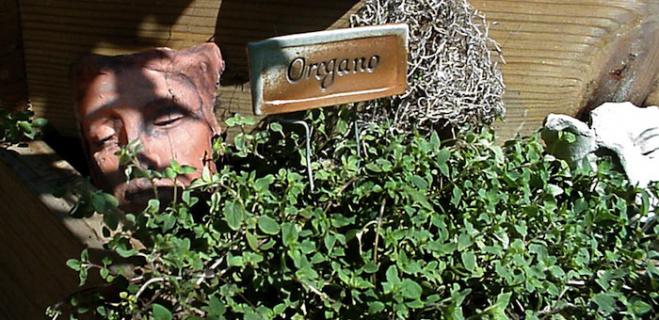Herb Gardening for Beginners

Just outside my back door is a patch filled with happy buzzing bees. When I need a little rosemary for my chicken, or thyme for my fish, or lavender for a bouquet, I just pop out the door and cut a handful. You're thinking, wow, I'd like to do that too, but I don't know anything about growing herbs.
Good news! You don't need to! Herb gardening is about the simplest form of gardening there is.
An herb garden can be planted just about anywhere that you have space--a strip of dirt beside the front walk would even work. And if you have no outdoor space, herbs can be grown in large containers on a sunny porch or balcony. Most herbs do not like rich soil, the exception being basil. Don't go to any serious trouble adding manure or fertilizer; just make sure your future herb garden has been turned over and well-weeded.
Herb gardening is easiest when you buy already-established plants. Many herbs are not easy to grow from seed, the exception again being basil. Just head down to the nearest nursery for a few 2-inch potted plants.
Planning your herb garden
Herb gardening requires a little bit of planning, but not much. When you buy your plants, they should come with a little plastic marker that gives you basic information about each plant, how tall it will grow, how wide, and so on.
Remember that while your herbs are small now, they will grow quite rapidly and take their full share of space, so give them room. My huge rosemary bush--bigger around than I am tall, and standing about half that height--started off as a teeny 2-inch potted plant, for instance! If you're worried about weeds, mulch your herb garden with straw or wood chips, and fill empty spaces with annuals like marigolds and nasturtiums.
Taller plants should go in the back of the flower bed if it is along a fence or house. For a round or oval shaped bed, you will want the tallest plants to go in the middle and gently slope down from there. When herb gardening, you need to remember that access is key if you want to enjoy the herbs in your food. To pick them, you have to be able to reach them! One great design is an herb spiral, a fairly sophisticated permaculture design in which the planting is carefully planned. If you decide to get serious about herb gardening, it may be a plan for you to explore.
- Lavender is extremely easy to grow. It's not picky about soil, and it's not a water hog. Provence is a big blowsy lavender that is the favorite for scent. Hidcote is a dwarf variety with a tidier habit.
- You can't kill mint with a stick! The problem is, it can be invasive and take over gardens if you're not careful. Growing mint in a pot is a good solution.
- Lemon balm is a wonderful, easy to grow herb that makes terrific tea, especially iced.
- Sage is as easy as lavender. Look for interesting varieties like the beautiful tri-color and the tasty pineapple sage.
- Rosemary is a vigorous plant that can grow into a good-sized bush, so give it plenty of room.
- Basil is easy to grow but it acts less like an herb and more like greens. It needs rich soil and plenty of water.
Once you've started herb gardening, you'll start finding all kinds of excuses to buy new plants. And even better--you'll start finding all kinds of new uses for the herbs in your garden.
Lynn Siprelle runs this website.
